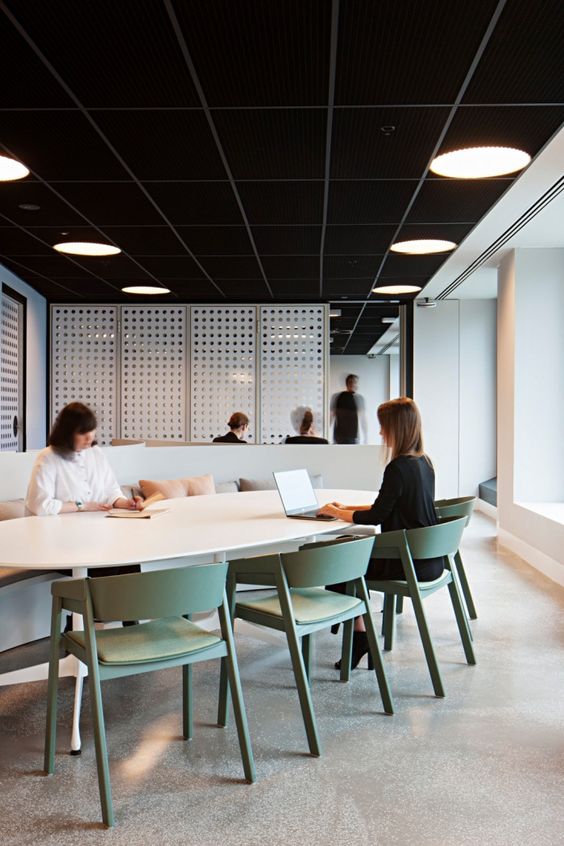
Using Office Design to Embrace Collaboration
In a world where the average worker spends 8.8 hours working in an office, according to Inc, your workspace will have a significant influence on your productivity. The desks, chairs, flooring, plants, and the paint job will all have a significant role to play. Sadly, most businesses are still stuck with the drab office designs of the 1990s.

Source: Pinterest
Often, business leaders give cutting costs as an excuse for failing to update their office design, but this ends up biting them back. By spending endless hours in such enclosed environments, not only does the employee morale dwindle, but the chances of creating a collaborative culture are also lowered. A simple idea such as adding a collaborative space might be enough to build a culture of collaboration throughout the workforce. Here is why collaborative spaces matter and how to build one:
It Creates an Area for All
A collaborative space doesn’t have to drive up the cost of your office design, according to Norrsken Ko. it simply has to help improve the flow of ideas in your workplace. When spending most of their time in cubicles and departments, there is little to no interaction between employees. As a result, when it comes to projects that need more than one department to work in tandem, it becomes tough for the teams to collaborate.
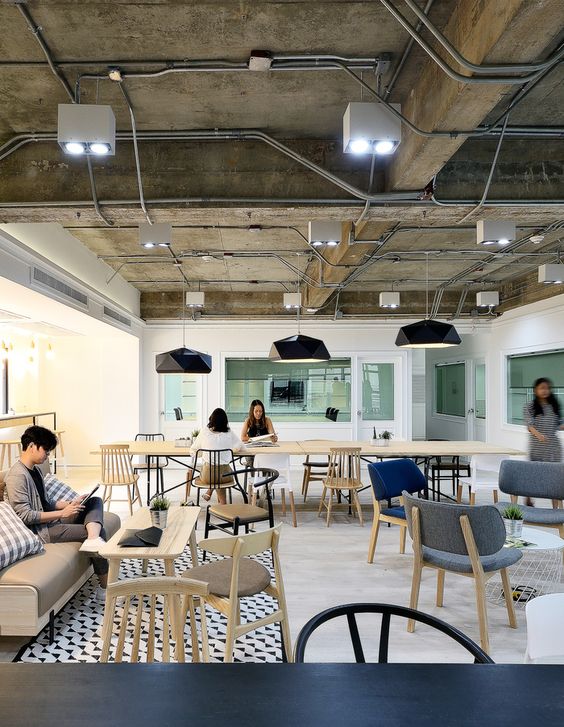
Source: Pinterest
As a solution, the collaborative space is meant to be an area where employees can meet and share all their ideas. Instead of having one department set camp in another’s territory, this neutral ground can help improve the flow of ideas. In this space, everyone feels like their opinion counts, rather than feeling like they are answering to the other party.
Employees’ Emotional Health
An employee’s productivity level is only as goods as the emotional commitment that they give to their job. When they have little interaction with the rest of the workforce, the chances are that they will be emotionally impaired. Often, this situation results in burnout or resistance to the slightest change, especially if the change makes the office environment even more depressing.
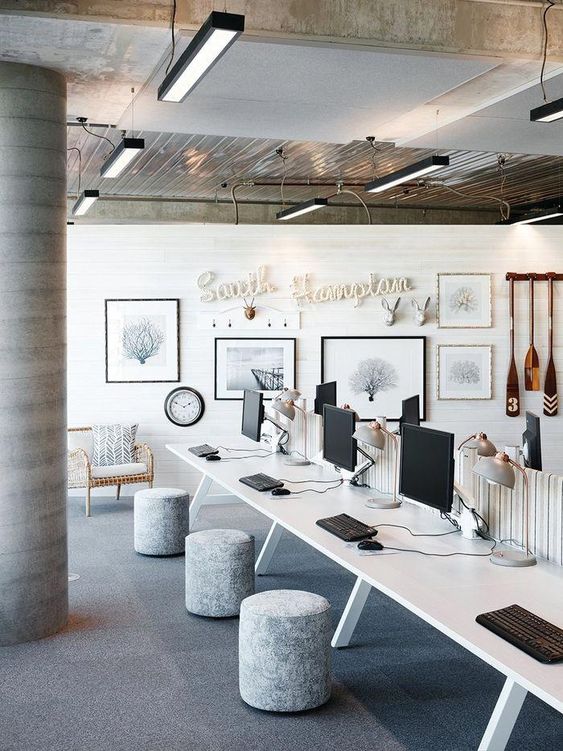
Source: Pinterest
An open space ensures that employees can enjoy different kinds of interactions every day vis-à-vis the typical compartmentalized office design. They will feel like part of a community when they work as a team to solve a problem. Even better, it becomes easier to make friends in the workplace when using an open plan office design.
An Overhaul Isn’t Necessary
You do not have to completely change the entire office environment to create such an area. The idea is to have a space where employees can work together. Sometimes adding beanbags and whiteboards into a room might be enough a change.
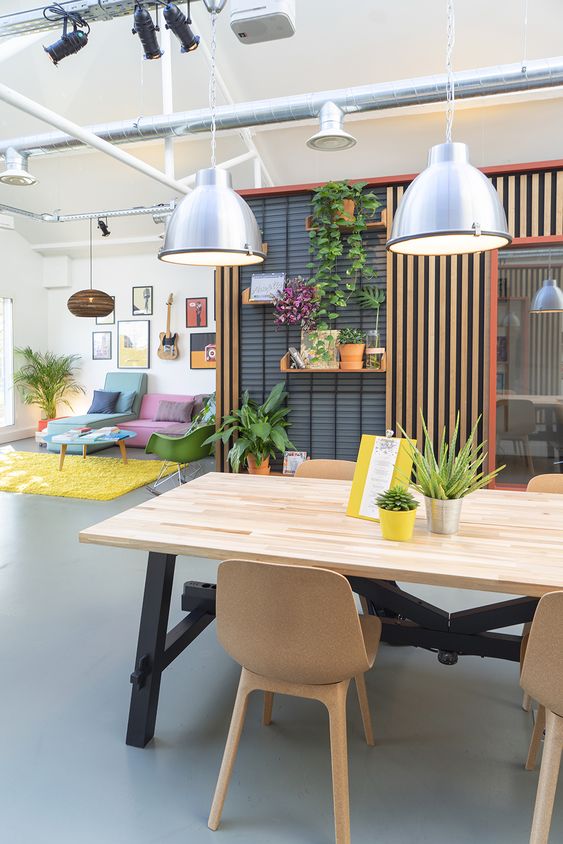
Source: Pinterest
You could also consider creating a lounge area where workers can meet for short breaks. Your choices of furniture, as well as office paint colors, will all help create the perfect space.
Flexibility Should Be the Core of the Design
As much as having collaborative spaces promises benefits galore to your business, it does have its downsides. For instance, it might be a source of distraction when an employee needs to concentrate on the task at hand despite being in a noisy room. Additionally, social interactions can sometimes push employees away from the primary goal of your business.
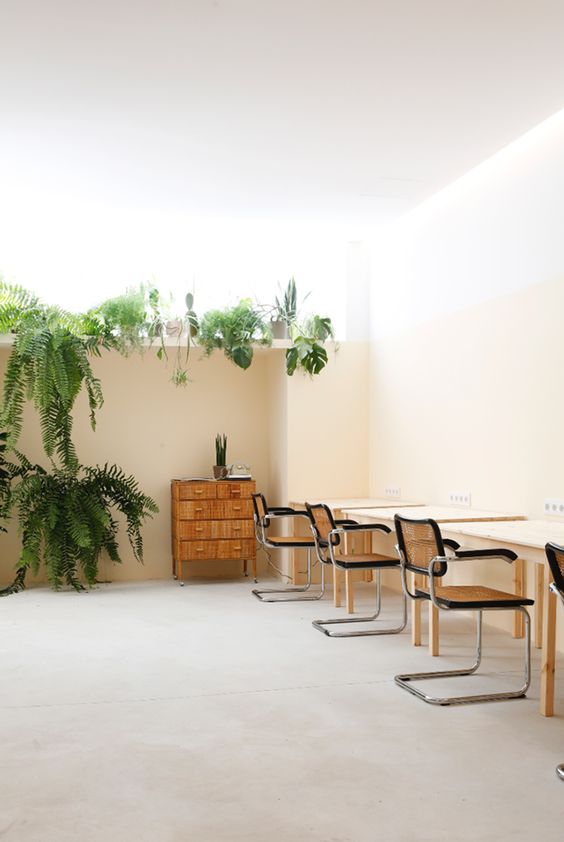
Source: Pinterest
To escape from the noise, some employees might start bringing noise-canceling headphones to work or even creating their own compartments. Instead, you should have an environment that supports both compartmentalization and collaboration to enjoy the best of both worlds.
Conclusion
Social interactions in the workplace encourage employee engagement and foster productivity. While a collaborative space might help create these social interactions, you can best enjoy its benefits by combining it with the traditional office layouts. Include a collaborative space in your office to enjoy the benefit galore offered by collaboration in the workplace.
